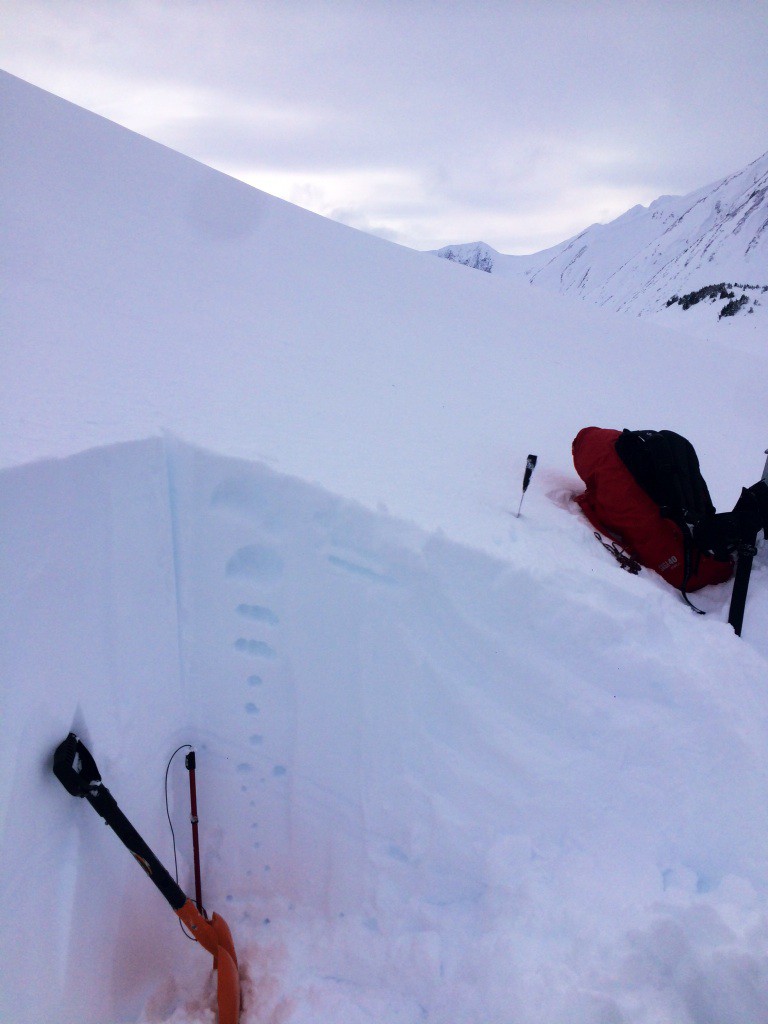| Recent Avalanches? | No |
| Collapsing (Whumphing)? | No |
| Cracking (Shooting cracks)? | Yes |
Observation: Turnagain
Location: Tincan Ridge - Hippy Bowl, CFR
Headed up to Tincan to assess the snowpack post storm cycle. With over 10′ of snow that fell in 10 days (at upper elevations) we did not dig to the old snow surface. We dug 120-150cm (4-5′) down to look for any weak layers that may have formed during the fluctuations in temperature during the storm. We did not dig deeper since it is this top 4-5′ that is most likely to be impacted by the weight of people/snowmachines.
Small and stubborn 2-3' shooting cracks along the windloaded Tincan ridge.
Overcast with some sun shining through, light variable winds, warm temperatures (35F at 1,000' and upper 20'sF at 3,000). Nice day despite the flat light.
Wet snow at 1,000'
4" of damp sticky new snow at 1,500'
6" of low density snow on a breakable crust at 1,800'
Above 2,000' - great soft settled powder - however last night's winds have done some damage and formed wind slabs and crusts along ridgelines and other exposed areas.
See video.
We dug 4 pits to see if we could find similar 'scary' results that Graham had yesterday on Repeat Offender on Seattle Ridge. We found only stable snow, the exception being stubborn wind slabs on ridgelines.
Pit #1: 1,900' - ECTN 14 30 down hardness change, generally right side up snowpack
Pit #2: 2,200' (similar elevation as Graham's pit mentioned above) - ECTN 11 35cm snow hardness change, generally right side up snowpack
Pit #3: 2,550' - ECTN 11 15cm down, hardness change, generally right side up snowpack
Pit #4: 3,300' - ECTN 11 20cm down, ECTP 21 40cm down hardness change (wind slab)
Bottom Line:
We found generally stable snow on Tincan with our tour and out pit results. Stubborn wind slabs, LARGE cornices and glide cracks seem to the be the biggest avalanche problems where we traveled. I'd be suspect of stiff wind slabs in steeper terrain that could break above a person however.






